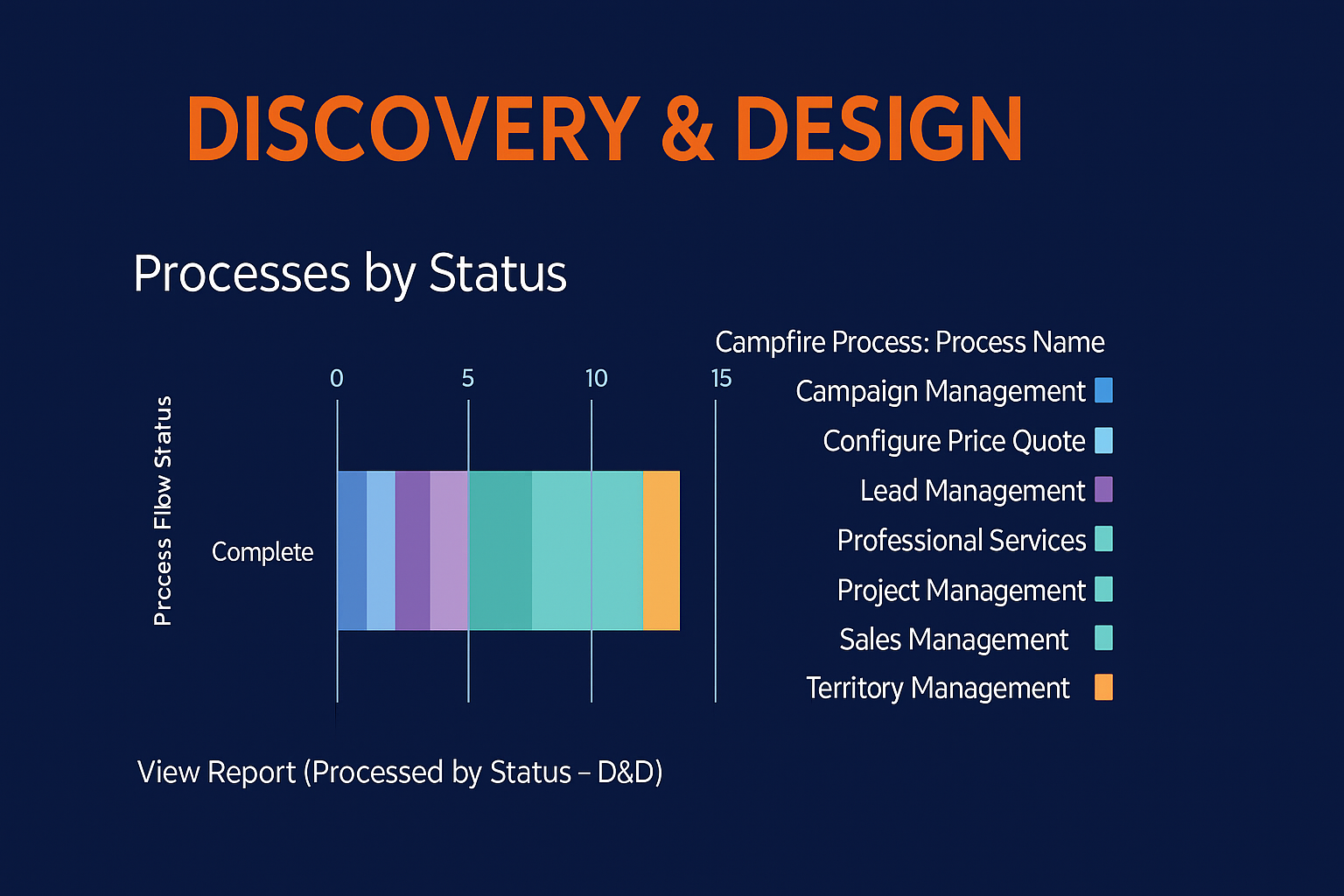
When you embark on a complex IT project—building new features, upgrading systems, or aligning multiple teams—the early stages aren’t just a formality. They set the foundation for everything that follows. With Campfire, you can make your Discovery & Design phase not only thorough but transformational, ensuring what you build is what your stakeholders truly need.
Here’s how to get the most value out of this phase using Campfire, and what you should expect.
The critical gap: what’s often missed
Many organizations enter discovery/design with only partial visibility:
These gaps lead to scope creep, rework, delays, overspend, and ultimately solutions that don’t fully deliver.
Here’s a checklist of what excellent discovery/design should achieve, especially using a tool like Campfire:
Outcome
Clarity of requirements
What You Should Do / Produce
Gather requirements in a structured manner. Define user stories, acceptance criteria, constraints, and dependencies. Campfire’s requirement management module helps track and organize all of this.
Outcome
Alignment of stakeholders
What You Should Do / Produce
Use collaborative workshops or virtual sessions. Campfire’s dashboards and progress tracking help everyone see what has been captured, what’s pending, and what has been agreed upon.
Outcome
Designing for the future
What You Should Do / Produce
Not just what’s needed now, but what might be needed later (scalability, extensibility). Think about testing, data flows, and integrations. Campfire’s structured future-state process records, design details, and phase tagging support planning ahead.
Outcome
Efficiency in testing & validation
What You Should Do / Produce
Define test cases early. Automate test data where possible. With Campfire’s collaborative testing framework, you can reduce errors and catch issues earlier.
Outcome
Risk reduction
What You Should Do / Produce
Identify unknowns, dependencies, and technical challenges. Use metrics and dashboards to spot bottlenecks. Campfire allows you to monitor progress and testing data, helping you manage risk before coding begins.
To reap the full benefits, pair Campfire’s capabilities with sound process discipline.
The Payoff: What you gain
If you lean into Discovery & Design using Campfire, you can expect:
Rather than treating discovery/design as just a kickoff checklist, see it as the strategic moment to set direction and save cost over the life of the project. With Campfire’s structured requirement management, collaboration tools, testing framework, dashboards, and visibility, you have what you need to make that phase powerful.
If you’re about to begin a project or are rethinking your process, ask:
When these are addressed, using Campfire, your Discovery & Design phase becomes an investment that pays off in every subsequent phase of your project.
